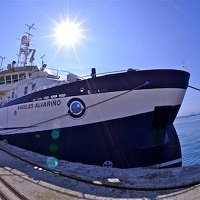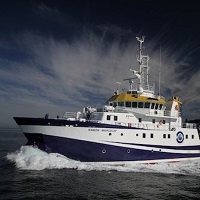Keyword
Total dissolved inorganic carbon (TCO2) concentration in the water column
33 record(s)
Type of resources
Categories
Topics
INSPIRE themes
Keywords
Contact for the resource
Provided by
Years
Formats
Status
-

The goals of this survey are framed within the educational activity of the Faculty of Marine Sciences ULPGC to give the possibility of a complete oceanographic study (Physical , Chemical , Biological and Geological Survey ) in the south of Gran Canaria students of Degree, Bachelor and Master , the convergence zone between the area and the trail of the island and the presence of permanent rotation south of it. Thus this survey will contribute to a comprehensive training for students in oceanographic study of an oceanic region may Determine the structure of water bodies, the effects of convergence and divergence to the passage of the Canary Current across the channels between islands, mass transport , and nutrients. Determine the distribution of chemical species , including oxygen and carbon dioxide system and quantify the transport of CO2 in the atmosphere-ocean study area , the effect of micro and mesoscale phenomena in their distribution. To characterize the effect of the wake , turns and other mesoscale structures in the distribution of species of phytoplankton and zooplankton.
-

Main targets: · ESTOC Observatory service - FixO3. · ESTOC time-series - Winter sampling. · Coastal observatory sampling. · Time Serie for environmental control of the PLOCAN test bed.
-

Main targets: · ESTOC Observatory service - FixO3. · ESTOC time-series - Winter sampling. · Coastal observatory sampling. · Time Serie for environmental control of the PLOCAN test bed.
-

Main targets: · ESTOC Observatory service - FixO3. · ESTOC time-series - Winter sampling. · Coastal observatory sampling. · Time Serie for environmental control of the PLOCAN test bed.
-

Main targets: · ESTOC Observatory service - EMSO-ICOS. · ESTOC time-series - Winter sampling. · Coastal observatory sampling. · Time Serie for environmental control of the PLOCAN test bed.
-

Main targets: · ESTOC Observatory service - EMSO-ICOS. · ESTOC time-series - Winter sampling. · Coastal observatory sampling. · Time Serie for environmental control of the PLOCAN test bed.
-

Main objetive of the project VULCANA, is assess the degree of affection and recovery of the marine ecosystem of the submarine volcano of the island of El Hiello, extending it to any other region of the canary islands sensitive to underwater volcanic activity. For this purpose, the physical-chemical, biological and geological properties of the eruptive process will be monitored in the island of El Hierro and other sensitive places, giving continuity to the temporary series of multidisciplinary data of a monogenetic submarine volcano in Spanish waters.
-

The goals of this survey are framed within the educational activity of the Faculty of Marine Sciences ULPGC to give the possibility of a complete oceanographic study (Physical , Chemical , Biological and Geological Survey ) in the south and north-east of Gran Canaria students of Degree, Bachelor and Master , the convergence zone between the area and the trail of the island and the presence of permanent rotation south of it. Thus this survey will contribute to a comprehensive training for students in oceanographic study of an oceanic region may Determine the structure of water bodies, the effects of convergence and divergence to the passage of the Canary Current across the channels between islands, mass transport , and nutrients. Determine the distribution of chemical species , including oxygen and carbon dioxide system and quantify the transport of CO2 in the atmosphere-ocean study area , the effect of micro and mesoscale phenomena in their distribution. To characterize the effect of the wake , turns and other mesoscale structures in the distribution of species of phytoplankton and zooplankton.
-

Main targets: · ESTOC Observatory service - FixO3. · ESTOC time-series - Autonm sampling. · Coastal observatory sampling.
-

The goals of this survey are framed within the educational activity of the Faculty of Marine Sciences ULPGC to give the possibility of a complete oceanographic study (Physical , Chemical , Biological and Geological Survey ) in the south of Gran Canaria students of Degree, Bachelor and Master , the convergence zone between the area and the trail of the island and the presence of permanent rotation south of it. Thus this survey will contribute to a comprehensive training for students in oceanographic study of an oceanic region may Determine the structure of water bodies, the effects of convergence and divergence to the passage of the Canary Current across the channels between islands, mass transport , and nutrients. Determine the distribution of chemical species , including oxygen and carbon dioxide system and quantify the transport of CO2 in the atmosphere-ocean study area , the effect of micro and mesoscale phenomena in their distribution. To characterize the effect of the wake , turns and other mesoscale structures in the distribution of species of phytoplankton and zooplankton.
 Catálogo de datos del IEO
Catálogo de datos del IEO